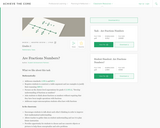
Photo showing 0.9% Sodium Chloride in 250 ml bag
- Subject:
- Career and Technical Education
- Health Science
- Material Type:
- Diagram/Illustration
- Author:
- Deanna Hoyord
- Date Added:
- 04/14/2021

Photo showing 0.9% Sodium Chloride in 250 ml bag

Photo showing 0.9% Sodium Chloride in 500 mL bag

This website gives you the opportunity see the world through different people all over the world on a variety of topics. Watch videos, see lesson plans about global issues and looking at it from a lense of focus on 100 people.

Photo showing 100% intake of a plate of food.

Public education is the single largest expenditure for state and local governments across the nation. Yet it is arguably the most criticized. Many people charge that public schools are faltering and that American academic achievements are far behind those in other countries. In recent years, many states and localities have experimented with improving public schools.

Presidents Washington ($1), Lincoln ($5), Jackson ($20), and Grant ($50) all appear on currency. But what about this guy Alexander Hamilton on the ten-spot? How did he get there? A sawbuck says you'll know the answer after reading this piece.

The primary purpose of Practicum is to provide the student with a practical, hands-on learning experience, which is designed to help the student develop course competencies and confidence in implementing skills within an actual instructional setting.The practicum experience is supervised by a Practicum Site Mentor and a Technical College Instructor. The Technical College Instructor provides scheduled on-site observations and written evaluations to the student, and written evaluations are provided by the Mentor. If a student is planning to transfer to a 4-year institution, it is recommended that the Practicums be completed in a special education classroom or working with a student with special needs.

Photo showing 25% intake or “bites” of a plate of food.

This unit focuses on the diversity of life at Hartje School Forest and centers around NGSS Standards on Ecosystem Interactions, Energy and Dynamics. Field experiences in observing and recording the diversity of life, seed dispersal methods, plant pollination, and plant life cycles will support science disciplinary core ideas, cross-cutting concepts, and hands-on engineering practices.

The 1920s was a decade of increasing conveniences for the middle class. New products made household chores easier and led to more leisure time. Products previously too expensive became affordable. New forms of financing allowed every family to spend beyond their current means. Advertising capitalized on people's hopes and fears to sell more and more goods.

Photo showing 50% intake of food on a plate.

Photo showing 75% intake of a plate of food.

Photo of a mannequin prepared to transfer using a crossed sling.

www.homeschoolshares.com offers a great free downloadable link to ABC exercise cards.

Alphabet Workout
We used first and last names. Every letter is an activity. You could spell answers to review questions, random questions, or vocab words. Possibilities are endless! Work individually or as a group. Make it fit for your curriculum and environment.

Using ARIS open-source platform, students create a scavenger hunt/game for district students to explore local community career opportunities. Â

Climate Wisconsin is an educational multimedia collection featuring stories about the impact of climate change in Wisconsin.
LEARNING GOALS:
Expand understanding of how climate change impacts life in Wisconsin.
Connect personal observations to the study of climate and environmental science.
Identify actions that may impact changes to our climate.

Students participate in a puzzle activity to identify leadership characteristics that Abraham Lincoln possessed. They review the changes in the redesigned $5 note and consider how LincolnŐs leadership characteristics contribute to the fact that he is pictured on the $5 note. Students look at a timeline of LincolnŐs life and identify significant events in his road to the White House. They play a game to review content learned in the lesson.

Students need to determine if fractions are the same as whole numbers by answering several questions and providing evidence and explaining their reasoning.

Activity Tailor has a great selection of resources that are free and avilable via registration for all areas of speech and language.